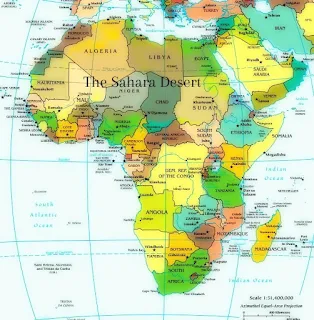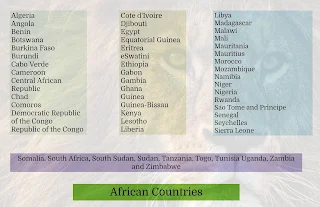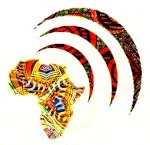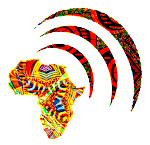Why is North Africa listed as separate from the African continent
Why is North Africa listed as separate from the African continent.
 |
| MENA and Sub Saharan Africa |
MENA and Sub Saharan Africa
MENA region
In politics and economics as well as racial lines, North African countries are commonly grouped with the Middle East under the umbrella of MENA. The Middle East and North Africa (MENA) is a region encompassing approximately 22 countries in the Middle East and North Africa.
Many of the 12 OPEC nations are within the MENA region. While there is no standardized list of which countries are included in the MENA region, the term typically includes the area from Morocco in northwest Africa to Iraq in southwest Asia and down to Sudan in Africa.
Historically Morocco, Algeria, Tunisia, Libya and Egypt, the five African countries in the North of Africa, mostly do not; describe themselves as Africans even though they unquestionably habituate African geography since the Arab conquest and occupation of Africa.
In 1962, North Africa and South Africa were both struggling against colonialism and apartheid when Nelson Mandela went to receive military training with the Algerian FLN in Morocco. Morocco, Algeria, Tunisia, Libya, and Egypt share not only a colonial past with the rest of Africa but also a physical continent. The self-described MENA region has majorly contributed to the historical, scientific, trade and cultural progress of humanity.
Why is there a Sub Saharan Africa?
The dividing line itself also has some troubling origins in what Larkin calls “racist” colonial theories that thought northern Africa more culturally developed.
“It divides Africa according to white ideas of race, making North Africans white enough to be considered for their glories, but not really white enough,” Tatenda Chinondidyachii Mashanda, a politics and international affairs scholar at Wake Forest University, wrote earlier this year for The African Exponent. ” [It] is a way of saying ‘Black Africa’ and talking about black Africans without sounding overtly racist.”
What exactly does Sub-Saharan Africa mean? According to the UN, Sub Saharan Africa consists of all African countries that are fully or partially located south of the Sahara desert. Nigerian-born Chika Onyeani, who is chairman of Celebrate Africa Foundation said in 2011“I believe that sub-Saharan Africa was created due to the AIDS pandemic beginning in the last 1970s.”. Onyeani said he and his group feel “sub-Saharan Africa” is a racist term that should be rejected by all Africans.”
Djibouti is in the Horn of Africa south of the Sahara but is considered part of the MENA region. Mauritania and Sudan are mostly desert but are also considered part of MENA. Sub Saharan African countries are Angola, Benin, Botswana, Burkina Faso, Burundi, Cabo Verde, Cameroon, Central African Republic, Chad, Comoros, Congo, Dem. Rep., Congo, Rep., Côte d'Ivoire, Equatorial Guinea, Eritrea, Eswatini, Ethiopia, Gabon, The Gambia Ghana, Guinea, Guinea-Bissau, Kenya, Lesotho, Liberia, Madagascar, Malawi, Mali, Mauritius, Mozambique, Namibia, Niger, Nigeria, Rwanda, Sao Tome And Principe, Senegal, Seychelles, Sierra Leone, Somalia, South Africa, South Sudan, Tanzania, Togo, Uganda, Zambia, And Zimbabwe.
“Sub-Saharan Africa’ is such an enormous catchphrase that it’s almost useless,” says Rosalind Morris, an African studies professor at Columbia University. “Nigeria as a state doesn’t look anything like Kenya as a state doesn’t look anything like Botswana.”
Dividing Africa
The UN Development Program lists 46 of Africa’s 54 countries as sub-Saharan, excluding Algeria, Djibouti, Egypt, Libya, Morocco, Somalia, Sudan, and Tunisia. This does not make geographical sense four countries included are on the Sahara, while Eritrea is deemed sub-Saharan but its southern neighbor Djibouti is not.
The World Bank muddies the waters further, adding Sudan and Somalia to a total of 48 countries under the label. By contrast, the African Union refers to regional organizations like the East African Community and the Economic Community of West African States building blocks.
Therefore, maybe it is time for some nuance around a subject where the debate is so reductive that Yale anthropology professor Louisa Lombard says “academics are used to people speaking about Africa as one country.” What is wrong with more accurate geographic markers, like East, West, Central and Southern Africa? Or even just calling Nigeria, the world’s seventh biggest country, by its own name?
 |
| African countries list |

 Since 2007
Since 2007




